
- Howard County >>
- Glenwood Child Care >>
- 21738 Child Care Centers >>
- Your Journey Nursery and Preschool

Your Journey Nursery and Preschool - Glenwood MD Licensed Child Care Center

About the Provider
Description : Your Journey Nursery and Preschool is a Licensed Child Care Center in Glenwood MD, with a maximum capacity of 33 children. This child care center helps with children in the age range of 6 weeks through 17 months, 18 months through 23 months, 2 years, 3 years, 4 years, 5 years, 5 years to 15 years. The provider does not participate in a subsidized child care program.
- Route, Route Glenwood MD 21738
- (240) 394-6311
Operation Hours
- Monday 7:15 AM - 6:00 PM
- Tuesday 7:15 AM - 6:00 PM
- Wednesday 7:15 AM - 6:00 PM
- Thursday 7:15 AM - 6:00 PM
- Friday 7:15 AM - 6:00 PM
- Saturday Closed
- Sunday Closed
Program and Licensing Details
- License Number: 256788
- Capacity: 33
- Age Range: 6 weeks through 17 months, 18 months through 23 months, 2 years, 3 years, 4 years, 5 years, 5 years to 15 years
- Enrolled in Subsidized Child Care Program: No
- District Office: Region 6 - Howard County / Carroll County
- District Office Phone: (410) 750-8771 (Note: This is not the facility phone number.)
Location Map
Inspection/Report History
Where possible, ChildcareCenter provides inspection reports as a service to families. This information is deemed reliable, but is not guaranteed. We encourage families to contact the daycare provider directly with any questions or concerns, as the provider may have already addressed some or all issues. Reports can also be verified with your local daycare licensing office.
If you are a provider and you believe any information is incorrect, please contact us. We will research your concern and make corrections accordingly.
Be the first to review this childcare provider. Write a review about Your Journey Nursery and Preschool. Let other families know what’s great, or what could be improved. Please read our brief review guidelines to make your review as helpful as possible.
- Route, Glenwood MD 21738
- Login or Register to email this provider.
- Please be thorough in verifying the quality of this child care provider, and be sure to read any reviews and inspection records that can help guide you to an informed decision. You want to be confident your child is in good hands.
- If you notice any inaccurate information on this page, please let us know so we can correct. Report Incorrect Information
- ChildcareCenter does not verify business credentials including licensing information. You are responsible for performing your own research to select an appropriate care provider.
Quick Links
Nearby providers.
Your Journey Nursery and Preschool

10 Ways to Prepare Your Child for Preschool Success
Image source
The journey to a child's educational success begins long before they step foot into a classroom. Preschool is a crucial stage in a child's life that lays the foundation for their future academic achievements. Therefore, it is essential for parents to take an active role in preparing their children for a smooth transition into preschool.
The following ten strategies will provide invaluable guidance to parents when preparing their children for preschool, empowering them to thrive and flourish in their academic pursuits.
1. Visit the School
Prior to enrolling your child in a preschool, it is important to visit the facility with your child. This will enable you to gauge the school's atmosphere, staff, and overall environment. As you tour the school, assess the cleanliness, safety, and available resources. Additionally, pay close attention to the interactions between teachers and students, as this can be a strong indicator of the school's overall quality.
During your visit, encourage your child to explore the environment and interact with their potential classmates. This will allow your child to become familiar with the surroundings and help reduce any anxiety or apprehension they may have about starting preschool. In locations such as Colorado, where the Department of Early Childhood is dedicated to providing a high-quality early childhood system, you can expect to find preschools that adhere to these standards.
Once you have carefully evaluated a preschool and have observed its commitment to comprehensive and community-informed education, you can confidently decide whether it is the right fit for your child's educational journey. After considering these aspects, you may choose to enroll your child in a Louisville, CO preschool to ensure their successful start in education.
2. Establish a Routine
Establishing a consistent daily routine is essential for a successful transition into preschool. Start by implementing a regular bedtime and wake-up time, ensuring your child receives adequate rest. A well-rested child is more likely to be attentive and focused during the school day.
In addition to sleep, incorporate a routine for meals, playtime, and learning activities. A consistent routine not only provides structure and stability but also helps your child develop a sense of responsibility and independence.
3. Encourage Social Skills
Developing strong social skills is crucial for preschool success. To help your child build these skills, organize playdates with other children their age, and engage in group activities. Encourage your child to practice sharing, taking turns, and expressing themselves with their peers.
Fostering empathy and understanding in your child is equally important. Teach them to recognize and respect the feelings of others, as well as how to resolve conflicts in a constructive manner. These foundational social skills will serve your child well in preschool and beyond.
4. Develop Fine Motor Skills
Fine motor skills are essential for a variety of preschool activities, such as writing, cutting, and manipulating small objects. To help your child develop these skills, provide them with ample opportunities to practice activities that require precision and hand-eye coordination. Examples include threading beads, using scissors, and drawing with crayons or markers.
Incorporating these activities into your child's daily routine will help strengthen their fine motor skills, ultimately supporting their success in preschool.
5. Promote Early Literacy Skills
Instilling a love for reading and a strong foundation in early literacy is vital for preschool success. Read to your child daily, discussing the story and asking questions to gauge their comprehension. Encourage your child to identify letters and sounds, gradually introducing simple sight words.
Additionally, create a literacy-rich environment at home by providing a variety of age-appropriate books, magazines, and other reading materials. This exposure to written language will foster your child's reading and writing skills, preparing them for preschool and beyond.
6. Foster Math Skills
Introducing basic math concepts to your child will provide a solid foundation for their preschool education. Start by teaching your child to recognize and count numbers, using everyday objects for counting practice. Incorporate simple addition and subtraction exercises using toys, snacks, or other familiar items.
In addition to numbers, teach your child about shapes, patterns, and measurement. These early math experiences will help build a strong foundation for future academic success in this area.
7. Nurture Curiosity and Creativity
Fostering a love for learning and encouraging creativity are essential components of preschool success. Provide your child with a variety of open-ended, creative materials such as building blocks, art supplies, and dress-up clothes. Encourage your child to explore, ask questions, and experiment with these materials, nurturing their curiosity and creativity.
Support your child's interests by engaging in activities that align with their passions. This not only helps develop a love for learning but also fosters a sense of confidence and independence.
8. Teach Self-Care Skills
Developing self-care skills is crucial for a successful preschool experience. Teach your child to dress themselves, use the restroom independently, and wash their hands properly. Encourage them to take responsibility for their belongings, such as hanging up their coat and putting away their toys.
These self-care skills not only promote independence but also help your child adapt to the routines and expectations of preschool more easily.
9. Prepare for Separation
For many children, preschool is their first experience with separation from their parents. To ease this transition, gradually introduce your child to short periods of separation before preschool begins. Start by leaving your child with a trusted caregiver for brief periods, gradually increasing the duration over time.
During these separations, reassure your child that you will return soon and emphasize the positive aspects of their time away from you. This will help your child develop confidence and security in their ability to handle separation.
10. Communicate with Teachers
Maintaining open communication with your child's preschool teachers is crucial for their success. Establish a relationship with the teachers, discussing your child's strengths, weaknesses, and any concerns you may have. Regularly check in with the teachers to monitor your child's progress and address any issues that may arise.
By working together with your child's teachers, you can create a supportive and nurturing environment that fosters your child's growth and development throughout their preschool experience.
Preparing your child for preschool success involves a multifaceted approach that includes visiting the school, establishing routines, fostering social skills, and developing essential academic and self-care skills. By actively engaging in your child's education and maintaining open communication with their teachers, you can help lay the foundation for a successful and enjoyable preschool experience.
The post 10 Ways to Prepare Your Child for Preschool Success appeared first on Things That Make People Go Aww .

We are open. Please call for details
Please continue to watch and interact with Remind for parent contact. If you don’t have Remind please contact us to be added to the proper class.
For placement and any other questions please contact us at
334.568.1259 or [email protected]
Our Purpose
Welcome to Journey Church Preschool! Our goal is to provide quality childcare in an educational, loving, caring, and Christian environment. We value the trust you place in our staff and our program as we strive to serve your needs. Each staff person is dedicated to promoting healthy growth and development of your child.
Providing activities that promote physical, emotional, social, intellectual, and spiritual development is the basis for the curriculum. Christian songs, stories, and holidays will be included in our curriculum, as well as activities that promote developmental milestones.
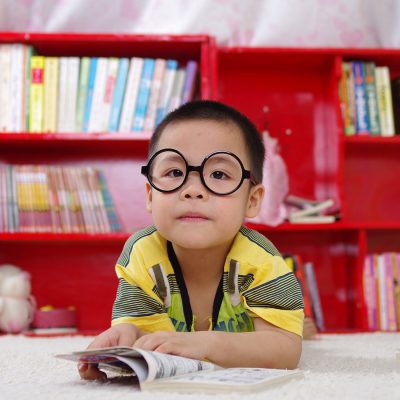
an educational, loving, caring, and Christian environment to learn and grow
Our Programs

Our Preschool Program is a full time, year round program for children 6 weeks—K4, Monday – Friday, from 7am-6pm.
After School
Our After School Adventure Club Program is from August – May for kids in Kindergarten – 6th grade. We are open Monday – Friday until 6pm.
Summer Program
Our Summer Adventure Club Program is during June and July for kids in Kindergarten – 6th grade, Monday – Friday from 7am-6pm.
Contact Journey Church Preschool
- Monday - Friday: 7AM - 6PM
- 334.568.1259
- [email protected]
Handbook & Welcome Packet
• The parent must complete the necessary registration forms and pay a non-refundable Annual materials fee. This covers registration fees, book, and materials for class.
• The parent must provide the center with a pre-school/child immunization certificate, or Blue Slip. This is to be kept updated, if it is not, the center will send out a notice stating that the required immunizations are out dated. The form can be obtained through the health department or your pediatrician.
• The parent will receive a copy of the policies and procedures and will go over them thoroughly. The parent will sign the Parental Agreement form which indicates policies and procedures and agreed upon fees.
• All enrollment forms, including a Schedule Information Form, must be completed by the parent and returned to the center by the first day of attendance.
• Parents of children with special needs or handicaps must inform the director of the child’s condition(s) prior to enrollment so it can be determined if the center can adequately meet the needs of the child. This is necessary for the well being of the child.

ABOUT OUR PRESCHOOL
Journey Preschool is a ministry of Journey Church and operates as a private, state licensed facility. The school was founded to offer the community a Christ-centered preschool.
Journey Preschool emphasizes a traditional Christian approach to education using phonics and basic math skills. All classes use the A Beka curriculum supplemented with additional resources. Classes are kept small enough to allow for individual teacher/student relationship. Our Christian teachers are highly qualified Early Childhood educators.
Registration Information
Registration for the following school year begins the first of January. For further information, please contact Joni Edester, Preschool Director at 859-873-0288 .
Registration and Supply Fee of $150.00 (non-refundable) is due upon registering your child for the class.
Sibling discounts are 10% for the second and 15% for the third child enrolled.
Half Day - 3 Year Old Class
Tuesday, thursday morning class: 8 :30 am - 12 pm tuition: $1,85 0/school year (payable monthly - $185 on the first).
Major focus on socialization skills through group activities.
Introduction to shapes, colors, numbers and letters
Daily activities include Bible stories, songs and some memorization.
Activities to improve motor and language skills.
Children must be three years old by August 1st of the entering year and completely toilet trained
Half Day - 4 Year Old Class
Monday, wednesday, friday morning class: 8 am - 12 pm tuition: $2150/school year (payable monthly - $215 on the first).
Socialization skills are developed through creative group activities.
Practice in writing letters and numbers.
Daily activities include stories, songs and memorization.
Activities to improve motor skills, language & work skills.
Children must be 4 years old by August 1st of the entering year.
Half Day - Pre-K Class
Monday - friday morning class: 8 am - 12 pm tuition: $2700/school year (payable monthly - $270 on the first).
This is an extension of the four year old program. Journey Preschool implements the A Beka curriculum and other resources to provide a rich platform for advancement.
Full Day - Three and Four-Year-Old Classes
Monday - friday 8 am - 3 pm tuition: $56 00/school year (payable monthly - $560 on the first).
Both classes are a perfect blend to extend the curriculum of the Threes and the Fours. Music, Gym and our Literacy classes are provided to enrich their learning experience.
After School Program
We are pleased to offer an after school program from 3 PM to 5:30 PM for kids who are enrolled in both of our full day classes . Outside play, nutritious snacks, and engaging activities will be offered that will enhance kid's daily classroom experiences. There is a cost of $7 per hour for each student who is eligible for the after school program and $18 if your child stays to 5:30 pm.
You will receive an invoice at the end of each month and the payment will be due at that time. Please make a check payable to Journey Preschool and write A.C.P. in the memo line and give it to the teacher in After Care Program.
After Care will not be provided on days when school is closed for Holidays, breaks, snow days or the day before Christmas break.
Click the button below for the After Care Program Form. Please fill it out and mail it to us to enroll your child!

JONI EDESTER
PRESCHOOL DIRECTOR / TEACHER
Joni teaches the Four-Year-Old Half Day class and serves as Director. She has dedicated the past 23 years educating and sharing the love of Jesus with the children and the families at Journey Preschool and Church. Her passion is to make an invisible GOD visible by providing Jesus filled loving and safe environment for the children.

VELICIA HYSELL
PRESCHOOL TEACHER
Velicia has been teaching 3, 4 and 5-year-olds at Woodford Christian Preschool for 21 years. She presently teaches the Four Full Day program. Felicia continues her education through DOTS and the Child Carer Council of Kentucky. In. addition, she's been educated in nursing and business.

MELANIE PRALL
Melanie has both a BA and a MA degree in education. She has 30 years of teaching experience, with 22 of those years being at Journey Preschool. Melanie and her husband have lived in Versailles for 31 years and have two daughters. She is a long time member of Versailles Presbyterian Church.

BRYNN DEATON
Brynn has a BA from the University of Kentucky. She's been a teacher at Journey Preschool since 2021. Brynn's family have been members of Journey Church for over ten yeas and love serving on the Children's Ministry. Brynn and Nathan have three very active kids and they love going to the beach!

TABATHA WOOD
Tabatha is a mom of two teenage boys and is married to Seth. Her family has lived in Versailles for 7 years. In her free time, Tabatha enjoys Bible studies, cooking, taking walks and watching basketball. Tabatha has received her BS and MS in Elementary Education and has taught for 13 years. She has a love and passion for helping little ones learn and grow academically, emotionally and spiritually.
- Free Resources
- Search for:

The YJT Kit
YJT Home | The Curriculum Kit | DECA & YJT | Coach Portal | Professional Development | Research | Testimonials | Free Resources | FAQs

The Your Journey Together kit includes all of the resources that a coach needs to implement the curriculum:
- YJT Coach Guide, with 29 step-by-step lessons and parent handouts (266 pages)
- Building Your Bounce: Simple Strategies for a Resilient You
- Promoting Resilience For Now and Forever, Family Guide (Infant/Toddler)
- Promoting Resilience For Now and Forever, Family Guide (Preschool)
- Web portal with access to videos, handouts, training materials, and more
Thank you so much for everything, we are truly excited to move forward in utilizing both tools in our program. I think the YJT tool will be a perfect fit for our program because it is parent friendly, simple to use and easy for staff to follow and understand. To be honest, it’s an affordable option as well, which is important. Our next step is for both the Family Services Team and the Education Team to meet and work on the specifics of moving forward with both.
We heard of YJT after we had watched a webinar for the e-DECA. When the webinar was over, we did some exploring on the website and saw YJT. I knew the Family Team was looking for a curriculum to use with families so I researched it a little more then gave the information to our Head Start Director and Family Team Manager. The fact that the two (DECA and YJT) could work together to support children and families was most appealing to us. So many times we end up with all these separate pieces and we have to try and show staff how they work together…. DECA and YJT did that work for us.
Child Development Team Manager , Audubon Area Head Start
The YJT Coach Guide
The curriculum is organized into four modules:
- Module 1: Introducing Resilience
- Module 2: Strengthening Caregiving Practices that Promote Resilience
- Module 3: Strengthening Children’s Protective Factors
- Module 4: Promoting the Resilient Adult Caregiver
The lessons associated with each module are designed to show parents how everyday routines, activities, and interactions help promote resilience in young children and the adults caring for them. The Coach Guide is supplemented by the adult resilience journal, parent guides and strategy resources, and access to the web-based YJT Coach Portal.
Here is a peek at one of the tools you’ll find in this resource:
CAREgiving Checklist for Families – English , Spanish
[email protected]
(866) 872-4687
444 Devereux Drive
Villanova, PA 19085
Free Webinars
Virtual Trainings
Assessments
Infants & Toddlers
Preschoolers
Professional Development
Conferences
Testimonials

Privacy | HIPAA | CIPA | Disclaimer
Copyright © 2024 Devereux Center for Resilient Children
Smooth Transitions: Preparing Your Preschooler and Yourself for Kindergarten Success
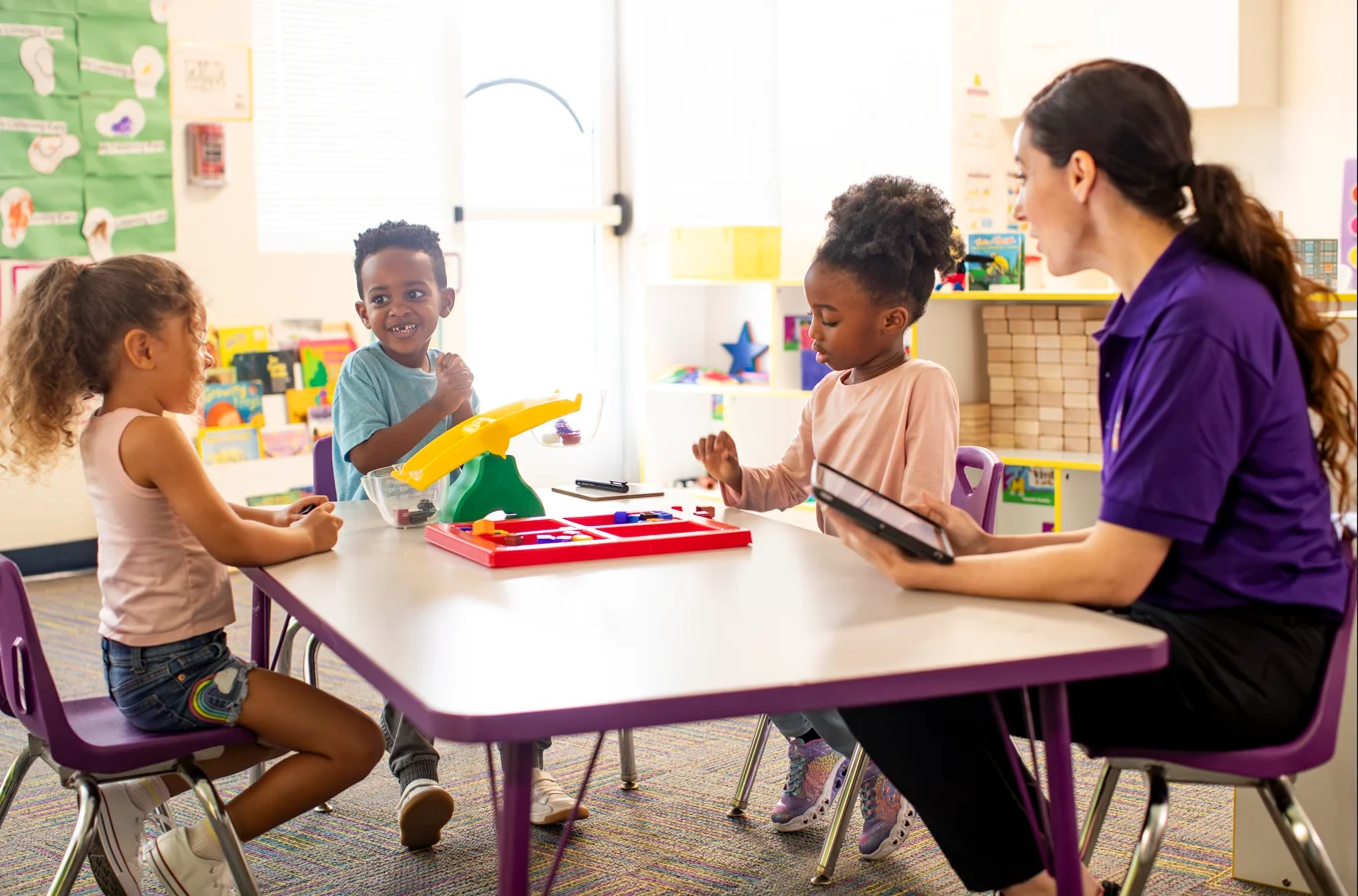
Smooth Transitions: Preparing Your Preschooler and Yourself for Kindergarten and Beyond
In this article, we'll guide you through practical steps and emotional preparations to help your preschooler thrive in kindergarten while offering you the support and confidence you need for this important journey. From academic readiness to managing separation anxiety, we'll cover the key aspects of preparing your child and yourself for the next big adventure: Kindergarten!
We tried to cover as much as we could, feel free to comment or suggest anything you think we should add. We hope that you find some of the advice helpful!
Part 1: Preparing Your Preschooler
The journey from preschool to kindergarten marks a significant milestone in both your child's life and your own as a parent. As your little one takes their first steps into the world of formal education, a mix of excitement and apprehension can flood your thoughts and emotions.
Priority #1 - Health & Safety
Ensuring the health and safety of your preschooler as they embark on their journey to kindergarten is paramount above all else. It's a responsibility that weighs heavily on the minds of parents, and rightfully so. We know that from working with all of our parents and guardians, that health and safety are forefront in your parenting decisions.
From immunizations to emergency plans and everyday well-being, preparing your child for the school environment involves a comprehensive approach to safeguarding their physical and emotional health.
Below are what we think contrive some of the most crucial aspects of health and safety preparation based on our polling/expertise.
- Immunizations: Ensure your child's vaccinations are up to date as per the school's local government requirements.
- Medical Records: Keep a copy of your child's medical history, allergies, and emergency contact information at the school.
- Allergies and Medications: Provide the school with a list of any allergies or medications your child may have or need.
- Emergency Plan: Discuss the school's emergency procedures with your child and ensure they understand what to do in case of an emergency.
- Health Check: Schedule a health check-up for your child to address any health concerns before school starts.
Social & Emotional Preparation
As your preschooler takes their first steps into the world of kindergarten, they not only embark on an academic journey but also a social and emotional one. Kindergarten is a place where your child will begin to navigate friendships, emotions, and a world beyond the comfort of home.
Ensuring they are emotionally ready for this transition is just as important as their academic preparedness. Below are some key activities we suggest to ensure social and emotional preparation in your child's kindergarten experience.
- Talk About School : Have conversations about what it will be like, the routine, and the importance of making friends.
- Independence : Encourage independence in tasks like dressing, using the bathroom, and eating to help them feel more confident.
- Social Skills: Remind them of basic social skills like sharing , taking turns, and listening to others.
- Emotional Well-being: Help your child identify and express their emotions and reassure them that it's okay to feel nervous or excited about school.
- Books and Stories : Read books about starting school to your child to help them understand what to expect.
From building resilience to fostering empathy, these steps will help your little one thrive both socially and emotionally as they embark on this exciting new chapter.
Academic Preparation
Kindergarten marks the beginning of your child's formal education journey, and it's an exciting time filled with opportunities for intellectual growth and exploration. As parents, you play a crucial role in setting the stage for your child's academic success by helping them build a strong foundation of skills and a love for learning.
We can help prepare your child for kindergarten and beyond through our early childhood education curriculum: L.E.A.P. (Learning Experience Academic Program) . Below, we offer some tips for academic preparation for kindergarten. From mastering basic concepts to fostering a curious mindset, these activities and practical tips will ensure your child is ready to take on the challenges and joys of their educational adventure.
- Basic Skills: Work on foundational skills like recognizing letters, numbers, shapes, and colors.
- Fine Motor Skills: Practice activities like coloring, cutting with scissors, and holding a pencil or crayon.
- Reading Readiness : Encourage a love for books by reading to your child regularly.
- Math Concepts : Introduce basic math concepts through play , like counting objects and simple addition and subtraction.
- Name Recognition: Teach your child to recognize and write their name.
- Routine: Establish a consistent daily routine that includes regular bedtime and mealtimes.
School Supplies
Equipping your child with the right school supplies is an essential step in ensuring a smooth transition to kindergarten. While specific requirements may vary by center, a basic list typically includes items like a backpack, lunchbox, pencils, crayons, glue sticks, and notebooks.
Check with your child's teacher for a detailed supply list to ensure you have everything they need for a successful start to their educational journey. Labeling your child's belongings with their name can also help prevent mix-ups and losses, making it easier to keep track of their supplies throughout the school year.
Healthy Habits
Promoting healthy habits in your preschooler as they transition to kindergarten is a vital aspect of their overall well-being and readiness for the educational journey ahead. These habits encompass a range of practices, from maintaining a nutritious diet and ensuring adequate sleep to teaching proper hygiene and instilling regular exercise routines.
By prioritizing your child's physical health and wellness, you're not only preparing them for success in kindergarten but also setting the foundation for a lifetime of well-being!
- Nutrition: Ensure your child has a balanced diet, and pack healthy lunches and snacks for school, if your child will take their lunch with them.
- Sleep: Establish a regular sleep schedule to ensure your child is well-rested for school.
Communication
Effective communication is a cornerstone of a successful kindergarten experience, both for your child and for you as a parent. It's through clear and open channels of communication that you can stay informed about your child's progress, address any concerns, and provide the support they need during this important transition. From fostering a strong connection with your child's teacher to nurturing open dialogues with your little one, the tips below will ensure that you and your child are well-prepared for the journey ahead.
- Teacher Communication: Establish a good line of communication with your child's teacher to stay informed about their progress.
- Open Conversations: Keep the lines of communication open with your child, so they feel comfortable discussing their school experiences with you.
- Regular communication: Set up a daily routine that includes talking with your child about what they are doing each day in the classroom. There are many ways to make this fun and effective!
First Day Preparation
The first day of kindergarten is a momentous occasion filled with excitement, anticipation, and perhaps a few butterflies in the stomach—both for your child and for you as a parent! It's a day that marks the beginning of an incredible educational journey and a major milestone in your child's life. To make this day as smooth and memorable as possible, proper preparation is key.
Below we offer some tips to prepare for that highly anticipated first day.
- Special Day: Make the first day of school a special one with a comforting routine or ritual.
- Goodbye Plan: Discuss a goodbye plan with your child so they understand that you'll be back to pick them up.
- Comfort Item: Allow your child to bring a comforting item (e.g., a favorite toy or blanket) to school.
- Experience the excellence of fake patek philippe , the premier destination for replica watches online!
From creating a special morning routine to ensuring your child feels comfortable and confident, these practical tips will ensure that the first day of kindergarten is a positive and successful experience for both you and your little one. Every child is unique, and it's important to adapt these preparations to your child's individual needs and temperament. Supporting them emotionally and providing a positive, reassuring environment can help ease the transition into preschool.
Part 2: Preparing Yourself
In Part 1 of this article, we talked about practical ways you can help prepare your preschooler for a successful kindergarten experience.
But what about you, the parent?
Preparing yourself for your child's transition to preschool is just as important as preparing your child. Below we offer some tips you can do to prepare yourself for this milestone event in your child’s development.
Emotional Preparation
Emotional preparation is an integral part of the journey as your preschooler transitions into kindergarten, not just for your child but for you as a parent as well. This transition can evoke a myriad of emotions, from pride and excitement to anxiety and a touch of nostalgia. It's natural to have questions, concerns, and even moments of self-reflection as you prepare to watch your child take this significant step toward independence and growth. Below we provide some recommendations to prepare for the emotional facets of your child’s transition to kindergarten, offering insights and strategies to help you navigate this period with confidence, understanding, and a deep sense of connection with your child.
- Acknowledge Your Feelings: Understand that it's normal to have mixed emotions about sending your child to preschool. Recognize and accept any anxiety or sadness you may feel.
- Positive Attitude: Approach the situation with a positive and optimistic attitude, as your child often mirrors your emotions.
- Stay Informed: Learn about the preschool's policies, routines, and expectations to help reduce any uncertainty.
- Support Network: Connect with other parents who have been through this experience or who are also sending their children to preschool. Sharing experiences and advice can be reassuring.
- Self-Care: Prioritize self-care to reduce stress. Ensure you're well-rested and taking time for yourself when needed.
Separation Anxiety
As your preschooler gears up for kindergarten, one of the most common challenges parents face is dealing with separation anxiety. The idea of leaving your child in a new environment, even for a few hours, can stir up feelings of apprehension, worry, and guilt. It's a natural response to a significant transition, and it's important to remember that you're not alone in experiencing these emotions. Below, we provide some practical recommendations and coping strategies to deal with separation anxiety to help both you and your child navigate this emotional journey as smoothly as possible. By understanding and addressing these feelings, you can pave the way for a successful and positive kindergarten experience for your little one.
- Gradual Transition: If possible, start with shorter sessions at preschool and gradually increase the time your child spends there. This can ease both your and your child's separation anxiety.
- Goodbye Ritual: Develop a special and consistent goodbye ritual with your child to provide a sense of comfort and predictability.
- Stay Positive: Be confident and cheerful during drop-offs. Avoid long, emotional goodbyes, as these can make separation harder.
- Trust the Instructors: Have trust in the staff's experience in handling separation anxiety. They will help your child adjust and have worked with many children during this transition.
- Stay Informed: Ask your child’s instructor how your child is doing during the day and whether there are any issues of which you should be aware.
Maintaining Communication
Effective communication is the cornerstone of a successful partnership between parents and educators, especially when it comes to your child's transition to kindergarten. Staying informed, sharing insights, and fostering open lines of communication with your child's teacher are key components of supporting your child's academic and social growth. Below, we provide ways to keep in touch, inquire about your child's progress, and address any concerns that may arise. By actively participating in this dialogue, you not only provide essential support for your child's educational journey but also strengthen the collaborative relationship between home and school.
- Open Dialogue: Keep the lines of communication open with your child. Ask about their day and listen to their experiences.
- Parent-Teacher Communication: Maintain regular communication with your child's teacher to stay informed about their progress and any concerns.
Taking Care of Practical Matters
Amidst the excitement and anticipation surrounding your child's transition to kindergarten, it's crucial not to overlook the practical matters that can significantly impact their experience. From managing schedules and understanding school policies to preparing for the unexpected, taking care of these practical aspects ensures a smooth and well-informed start to your child's educational journey. The following tips address the practical matters that, if managed, will help you be organized and well-prepared, minimize potential disruptions and create a supportive environment that allows your child to focus on their learning and growth in kindergarten.
- Schedule Flexibility: Be prepared for possible changes in your daily routine, especially during the initial adjustment period.
- Prepare for Illness: Understand the policies regarding sick children and have a backup plan for childcare if your child becomes ill.
- Emergency Contacts: Ensure your child's emergency contact information is up to date.
Maintaining a Positive Perspective
Maintaining a positive perspective throughout your child's journey from preschool to kindergarten is a powerful way to foster their love of learning and ensure a smooth transition. As a parent, your attitude, outlook, and encouragement all play a significant role in shaping your child's perception of this exciting new phase in their life. Below, we offer ways to cultivate and maintain a positive perspective, even when faced with challenges or uncertainties. From celebrating milestones and embracing individual progress to understanding the value of patience, these tips will help you and your child approach the kindergarten experience with enthusiasm and optimism, and set the stage for a joyful and successful educational journey.
- Celebrate Achievements: Celebrate your child's milestones and achievements in preschool, no matter how small they may seem.
- Resist Comparison: Avoid comparing your child's progress with that of other children. Each child develops at their own pace.
- Be Patient: Understand that it may take some time for both you and your child to fully adapt to the new routine.
Remember that it's completely normal for parents to feel a mix of emotions during this transition. With time, patience, and a supportive approach, you and your child can navigate the Kindergarten experience successfully. As you embark on this transformative journey alongside your preschooler, remember that you are not alone in your feelings, concerns, or aspirations. Parenthood is a constant evolution, and each step, including the transition to kindergarten, brings with it opportunities for growth, understanding, and deepening bonds. By nurturing your child's academic, social, and emotional development and by fostering your own resilience and positivity, you pave the way for a kindergarten experience that is not just successful but also filled with cherished moments and mutual growth. Your dedication as a parent is a profound source of support for your child, and as you both embrace this exciting chapter, you lay the foundation for a lifelong love of learning.
Don’t forget to share this post!

Sign up for our newsletter!
Stay connected with our early education resources
- Skip to primary navigation
- Skip to main content
- Skip to primary sidebar
- Skip to footer
TravelAwaits
Our mission is to serve the 50+ traveler who's ready to cross a few items off their bucket list.
19 Unique And Fabulous Experiences In Moscow

- Destinations
Thinking of visiting Russia? When visiting such a famous city, one must, of course, visit the iconic landmarks first. Moscow has plenty of those, most of them in the center of the city, which is very well-planned for tourists. Once you’ve seen the sights that are on most travelers’ lists, it’s time to branch out and visit some of the lesser-known sites, and there are some fascinating places to see and things to do.
I know this list is long, but I just couldn’t help myself. You probably won’t have the time to see them all. But that’s okay. Just scroll through the list and choose what sounds the most interesting to you. Where possible, make sure to book in advance, as things can get crowded, especially during high season.

1. The Red Square, Kremlin, And Surroundings
Red Square (Krasnya Ploshad) is the heart and soul of Russia, and where much of the country’s history has unfolded. This is the most famous landmark in Moscow and indeed the whole country, it’s an absolute must-do! The square is always full of people and has a rather festive atmosphere!
Saint Basil’s Cathedral
This is the famous church with the rainbow-colored, onion-domed roof. The cathedral was commissioned in the 1500s by Ivan the Terrible and according to legend, the Tsar thought it was so beautiful, that he ordered that the architect’s eyes be cut out afterward, so he could never build anything more beautiful! He wasn’t called Ivan the Terrible for no reason!
Lenin’s Mausoleum
The “love-it-or-hate-it” of tourist attractions in Russia. A glass sarcophagus containing the embalmed body of Russian revolutionary, Vladimir Lenin. It may seem a bit bizarre to display the mummy of a person, but it has been there for almost half a century and the 2.5 million visitors who come each year, clearly feel the queuing and thorough body search are worth it, to be in Lenin’s presence.
Pro Tip: no photos and no loud talking are allowed inside the Mausoleum.
Eternal Flame
There is an Eternal Flame in honor of an unknown soldier on the left side of Red Square. The hourly changing of the guards is worth seeing.
The Kremlin is the official residence of the Russian president. You can see it from the outside, or you can take an excursion to one of the museums located inside. This is the biggest active fortress in Europe, and holds a week’s worth of attractions! Once behind the 7,332-feet of walls, there are five squares, four cathedrals, 20 towers, various museums, and the world’s largest bell and cannon to see. Worth a special mention is the Armory Chamber that houses a collection of the famous Faberge Eggs.
Pro Tip: You can only go inside the Kremlin if you are part of a tourist group.


2. Bolshoi Theatre
Bolshoi Theatre translates to “The Big Theatre” in Russian, and the building is home to both the Bolshoi Ballet and Bolshoi Opera — among the oldest and most famous ballet and opera companies in the world.
Pro Tip: It’s hard to get an inexpensive ticket, so if you’re reading well in advance of going to Moscow then try buying tickets on the official website . Last-minute tickets cost around $250 per person. If this is out of your budget, about an hour before a performance, you can try buying a ticket at the entrance from a reseller. Most can speak enough English to negotiate the price.
Tour the Bolshoi Theatre: You can take a group guided tour of the Bolshoi Theatre which focuses on the history and architecture of the theatre and behind the scenes. There’s an English language tour that lasts 2 hours and costs around $300 for a group of up to six.

3. Luxury Shopping At GUM And TSUM
Russia’s main department store, GUM, has a stunning interior that is home to over 100 high-end boutiques, selling a variety of brands: from luxurious Dior to the more affordable Zara. Even if shopping is not on your Moscow to-do list GUM is still worth a visit; the glass-roofed arcade faces Red Square and offers a variety of classy eateries. TSUM, one of the biggest luxury malls in town, is right behind the Bolshoi and GUM. It’s an imposing building with lots of history, and worth a visit just for its design and its glass roof.

4. Christ The Savior Cathedral
This is one of Russia’s most visited cathedrals and is a newer addition to the gorgeous array of Muscovite cathedrals, but don’t let its young age fool you. After perestroika, in the early 90s, the revived Russian Orthodox Church was given permission to build a cathedral on this site. It did the location honors and built the largest temple of the Christian Orthodox Church. The façade is as grand as you’d expect, but it’s the inside that will mesmerize you, with its domes, gold, gorgeous paintings, and decor!
The cathedral is located just a few hundred feet away from the Kremlin and was the site of the infamous Pussy Riot protest against Putin back in 2012.
Pro Tip: Bring a shawl to cover your hair as is the local custom.

5. Gorky Park
Moscow’s premier green space, Gorky Park (Park Gor’kogo) is the city’s biggest and most famous park. There is entertainment on offer here for every taste, from outdoor dancing sessions to yoga classes, volleyball, ping-pong, rollerblading, and bike and boat rental in summer. In winter, half the park turns into a huge ice skating rink. Gorky Park is also home to an open-air movie theater and the Garage Museum of Contemporary Art. There is also Muzeon Art Park, a dynamic contemporary space with a unique collection of 700 sculptures. It is located right in front of Gorky Park.
6. Sparrow Hills Park
If you take a walk from Gorky Park, along the Moscow River embankment, you’ll end up in the city’s other legendary park, Sparrow Hills. Although the park doesn’t offer as many activities as its hip neighbor, it has a great panoramic view of the city
Pro Tip: You can take a free walking tour to all of the above attractions with an English-speaking guide.

7. River Cruising
One of the best ways to experience Moscow, and see all the famous landmarks, but from a different angle, is from the Moscow River. Take a river cruise. Avoid the tourist crowds. There are little nameless old boats that do the cruise, but if you are looking for a more luxurious experience take the Radisson Blu cruise and enjoy the sights with some good food and a glass of wine.

8. Metro Hopping
Inaugurated in the 1930s, the Moscow Metro system is one of the oldest and most beautiful in the world. Started in Stalinist times, each station is a work of art in its own right. I’d recommend touring the stations between 11 a.m. and 4 p.m. This way, you’ll be able to properly see it without the crowds. Ideally, I’d recommend taking a tour with a knowledgeable guide with GuruWalk, who will tell you stories of forgotten stations and how the history of the country is interconnected with the metro development. If going by yourself, then I definitely recommend checking out: Mayakovskaya, Ploschad Revolutsii, Kievskaya, Kropotkinskaya, Kurskaya, and Novoslobodskaya stations.
Visit the free Moscow Metro Museum: For real train enthusiasts, located in the southern vestibule of Sportivnaya station is a small free museum. Here you can take a peek into the driver’s cabin, see a collection of metro tokens from different cities, and see different models of a turnstile, traffic lights, escalator, and more.

9. Moscow State University View
In his effort to create a grander Moscow, Stalin had seven skyscrapers built in different parts of town; they’re called the Seven Sisters. The largest of these buildings and the one with the best view is the main building of the Moscow State University. Although this is a little outside the city center, the view is more than worth it.

10. Izmailovsky Market
Mostly known for the city’s largest flea market, the district of Izmaylovo is home to a maze of shops where you can get just about anything, from artisan crafts to traditional fur hats, handcrafted jewelry, fascinating Soviet memorabilia, and antiquities. It’s also one of Moscow’s largest green spaces. There are often no price tags, so be prepared to haggle a bit. Head to one of the market cafes for a warming mulled wine before continuing your shopping spree.
The History of Vodka Museum is found here, and the museum’s restaurant is the perfect place to sample various brands of the national drink.
Once you’ve covered the more touristy spots, Moscow still has plenty to offer, and the places below will also be full of locals! So for some local vibes, I would strongly recommend the spots below!

11. Moscow City
With a completely different vibe, Moscow City (also referred to as Moscow International Business Center) is like a mini Dubai, with lots of impressive tall glass buildings. Here is where you’ll find the best rooftops in towns, like Ruski Restaurant, the highest restaurant both in Moscow City and in Europe. Moscow City is great for crowd-free shopping and the best panoramic views of the city.

12. Tretyakov Gallery
Tretyakov Gallery started as the private collection of the Tretyakov brothers, who were 19th-century philanthropists. They gave their private collection to the government after their deaths. If there is just one museum you visit in Moscow, I recommend this one!

13. Tsaritsyno Museum-Reserve
Tsaritsyno was a residence of Catherine the Great more than two centuries ago. It became derelict during the Soviet era but has now been fully renovated. With its opulently decorated buildings, gardens, meadows, and forests, Tsaritsyno Park is the perfect place for a green respite in Moscow.

14. Kolomenskoye
A 10-minute metro ride from the city center is Kolomenskoe Museum-Reserve, where you can get an idea of what Russia looked like 200 years ago. You’ll find ancient churches (one dating back to the 16th century), the oldest garden in Moscow, and the wonderful fairytale wooden palace of Tsar Alexey Mikhailovich, father of Peter the Great.

15. Ostankino TV Tower
Built in 1967, Ostankino TV Tower was the tallest free-standing construction in the world at the time, it’s still the 8th tallest building in the world and the highest in Europe. It’s also the best observation deck, with a glass floor and 360-degree views. The speedy elevators take you 1,105 feet in next to no time.
Pro Tip: You need to book in advance; entrance is based on specific ticket times and the capacity is limited and only a certain number of tourists are allowed per day. Don’t forget your passport, you’ll need it to get through security.

16. Zaryadye Park
Zaryadye is a newly opened, landscaped urban park so new you won’t find it in a lot of tour guides. The park is near Red Square and is divided into four climatic zones: forest, steppe, tundra, and floodplains, depicting the variety of climatic zones in Russia.
These last three suggestions are a little quirky, but all are really worth checking out.
17. Museum Of Soviet Arcade Games
Release your inner child playing on 66 arcade machines from the Soviet era! What a great way to spend a couple of hours when tired of visiting museums and palaces. The staff speaks excellent English and are happy to explain how the games work.

18. Moscow Rooftop Tour
Take a 1-hour private Moscow rooftop tour with an experienced roofer. I can just about guarantee none of your friends will be able to say they’ve done it! For your comfort, I recommend wearing comfortable shoes. Take your camera, there are some amazing photo opportunities out there!

19. Sanduny Banya
This classical Russian bathhouse opened its doors in 1808 and is famous for combining traditional Russian banya services with luxurious interiors and service. If you enjoy spas and saunas, then you should experience a Russian bathhouse at least once in your life! Go with an open mind and hire a specialist to steam you as it’s meant to be done — by being beaten repeatedly with a besom (a leafy branch)! This is said to improve circulation, but is best done by a professional!
So there you have my list of things to do in Moscow. I could have gone on and on and on, but I didn’t want to try your patience! There are so many things to do in this vibrant city that you’ll definitely need to allocate several days for exploring.
Here are some other reasons to visit Moscow and Russia:
- 7 Reasons To Put Moscow On Your Travel Bucket List
- Russia 30 Years (And 30 Pounds) Ago
- Massive Mysterious Craters Appearing Again In Siberia

Born and raised in Sydney, Australia, before moving to Africa at the age of 21, Sarah Kingdom is a mountain climber and guide, traveler, yoga teacher, trail runner, and mother of two. When she is not climbing or traveling she lives on a cattle ranch in central Zambia. She guides and runs trips regularly in India, Nepal, Tibet, Russia, and Ethiopia, taking climbers up Tanzania’s Mount Kilimanjaro numerous times a year.

Total Guide to plan & book a great Trans-Siberian Railway Trip
31. December 2020
Destination The World
This post may contain affiliate links, where we may receive a small commission if you purchase something through following the links at no extra cost to you.
Sharing is caring!
- Pinterest 14
It’s slow travel at its best, taking you from one continent to another, through big cities, over the Siberian steppes and along the largest lake in the world. Without a doubt, a Trans-Siberian Railway trip will take you on the greatest railway journey in the world. This legendary adventure stretching over eight time zones is one of the best travel experiences you can have, and no other rail journey can compare to the Trans-Siberian Railway.
Travelling the Trans-Siberian Railway is a dream for many people, and for one of us, this ultimate adventure was a lifelong dream. Doing this trip independent can seem like a bit of a challenge, and it also did for us in the start. The questions can be many but read on. This blog post has all the answers on how to travel the Trans-Siberian Railway independently. We will also shortly present the stops we had en route and give you some suggestions on what to see there, as an idea, while you start planning your journey.
1. Planning your Trans-Siberian Railway trip
We chose the classic, original route, starting in Moscow, before ending in Vladivostok, and we had our Trans-Siberian Railway trip in winter. That is just one way of doing it, but the options are many.
There are many things to consider when you start planning your journey, but first things first. A trip with the Trans-Siberian is perfectly safe, both for families, solo and female travellers. It is the way Russians have travelled for years, and very few reported incidents. Take precautions, choose your berth wisely, and take care of your belongings.
A journey like this requires some planning. But if you are like us, then you also find planning your trip half the fun.
Checklist for planning your Trans-Siberian Railway trip:
- When do you prefer to travel? Which season?
- Do you want to travel eastbound or westbound?
- Which visas will you need to organise? Check visa requirements
- Make sure that your passport is valid six months after you return
- What should be your final destination?
- Which route should you choose?
- How much will it cost?
- Do you want to stop along the route? Where?
- Organise travel insurance
The above list gives you a brief overview of things to take into consideration when planning your trip. What you choose will mostly depend on your wishes, budget and the time you have on hand.
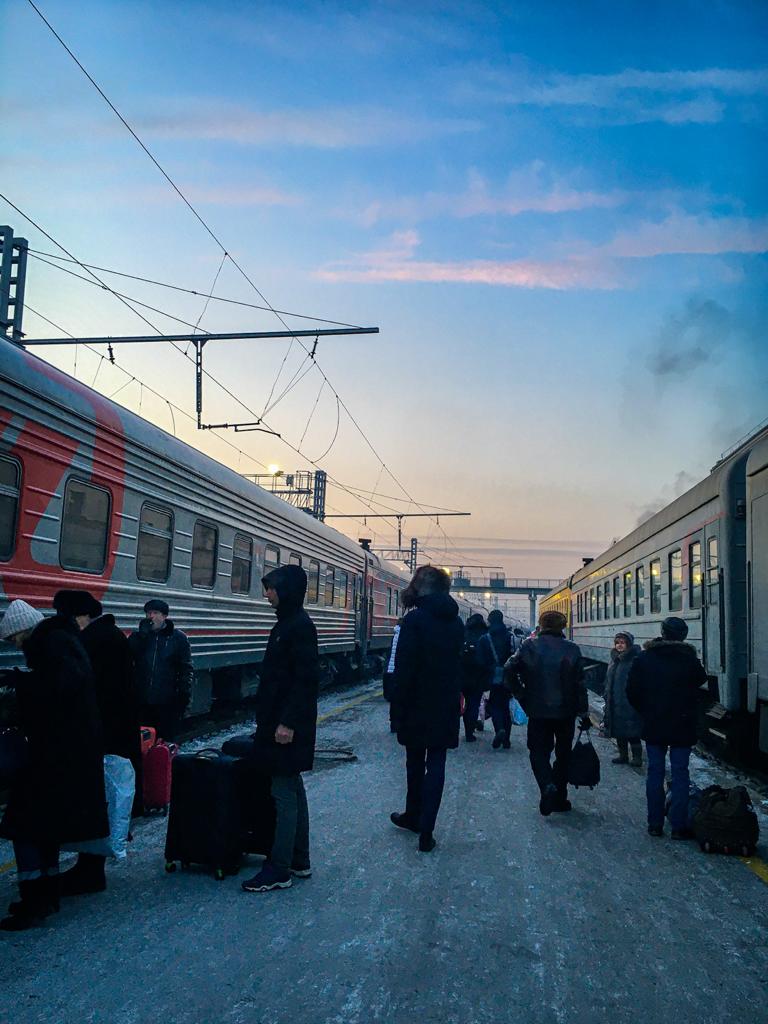
2. Best time to travel the Trans-Siberian Railway
If there is one best time to travel on the Trans-Siberian Railway or not, is really up to you and what you prefer. The train runs all year round, and each season has something to offer. Some periods are busy or warm while others are freezing cold.
Trans-Siberian in summer
Summer is the most popular time of the year for a Trans-Siberian Railway trip. With the summer holiday in the western world, lots of travellers find themselves onboard the train. It can get busy and harder to find tickets for some routes. The summer months are great if you travel solo and want to meet other fellow travellers.
The climate in Russia is mild, but July and August can get very hot. The same goes for Mongolia. Even the summer is shorter in Mongolia it really can get warm also there. China is hot and humid in the summer months.
Trans-Siberian in autumn
Autumn is by many considered the best time to travel the Trans-Siberian. It is less crowded, the worst heat is gone, and the foliage let you catch the autumn colours along the route. The weather can still be nice the whole route. In China, the humidity from the summer is gone.
Trans-Siberian in winter
A Trans-Siberian trip in the winter is spectacular. Yes, it can get freezing cold, like in really Siberian cold, and you will see that Siberia looks like yes, Siberia. The trains are heated and, you can expect to sweat even in winter. But to snug up inside while watching the Siberian winter pass by outside the windows is a magical feeling.
It is much fewer passengers in the winter, so it never gets crowded, and finding tickets is rarely a problem. Bring lots of warm clothes (think layers of clothes) for exploring the places you choose to stop.
Winter is considered the best time to visit Lake Baikal with its clear thick ice perfect for winter activities. The lake usually freezes from mid or end of February and last at least throughout March.
Trans-Siberian in spring
The spring is maybe the least recommended time for a Trans-Siberian Railway trip. It is no longer winter and also not summer. In late spring when the snow has melted, and nature starts to wake up is also very pretty. China has pleasant weather in the spring.
Spring is also not the busiest time on the train. It’s great for avoiding crowds and, tickets are available.
TIP: Read our post on the Harz Mountain Railway or the Zittauer Schmalspurbahn in Germany if you would like a nostalgic journey with a steam train

3. Choose your Trans-Siberian Railway route
The Trans-Siberian Railway is not one train route, but it’s a network of railways connecting Moscow with the Russian Far East. The building of the railway started in 1891 and finished in 1916. Train services ran along the route much before its completion. Today, the expansion of the railway system continues, with connecting routes to China, Mongolia, Japan and North Korea.
You can choose from three main routes, but the Trans-Siberian Railway also has several other options for connections along with its extended network. You don’t have to follow the same route the whole time, and you can combine more routes in one journey.
Eastbound or Westbound?
You can make your Trans-Siberian Railway trip in both directions. The choice is up to you and what you prefer. The eastbound route tends to be more popular among western travellers, so westbound is recommended if you are looking to avoid too many other travellers.
Usually, you will have to book one long-haul flight. Either to start the journey or when you have finished. Check airfares before you decide, it can be a big difference in costs depending on where and when you fly.
BUDGET TIP: In case you end your journey in Vladivostok, you save big bucks on flying domestic back to Moscow, and then have your international flight out from there, instead of flying out from Vladivostok
We chose eastbound from Moscow for two reasons. Firstly we found it kind of more romantic to start our adventure with the long train journey first, instead of with a long haul flight. Secondly, starting our winter trip with the Trans-Siberian in Moscow, also gave us the chance to celebrate New Year’s Eve there before we boarded the train the next day.
TIP: Read our post with tips and attractions in Moscow for a Moscow city break
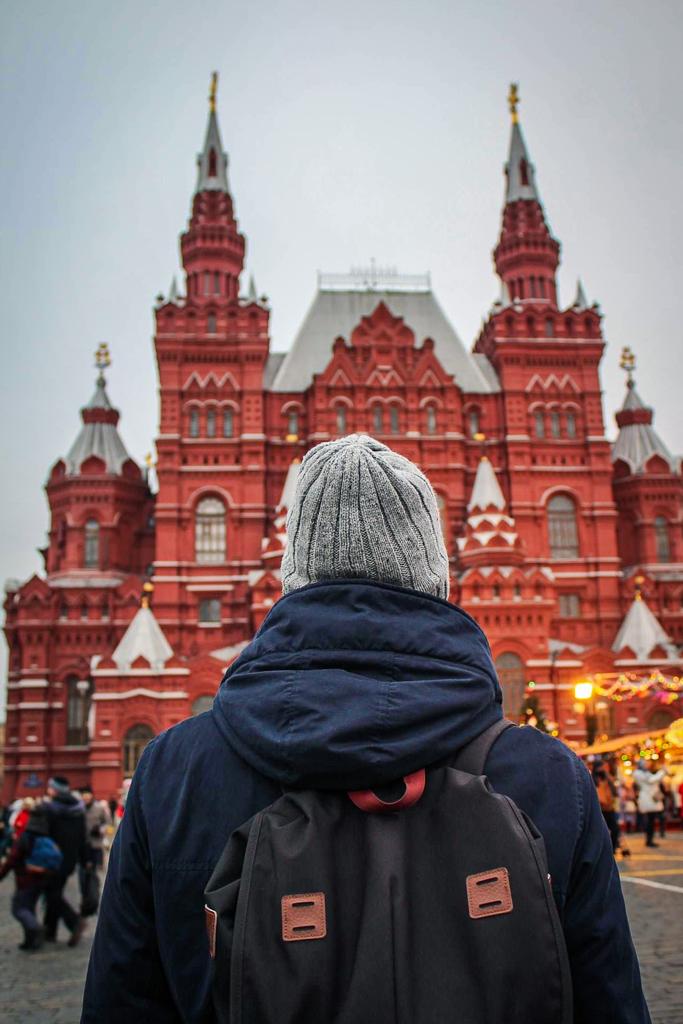
Trans-Siberian line: Moscow to Vladivostok
The legendary and original mainline from Moscow to Vladivostok is mostly following the historic path over the continent. Trains leave Moscow daily for this 9,259 km long journey. Depending on the train number, this route takes at least 143 hours, or around six full days. It can take longer. Some of the trains have slightly different routes or more stops en route.
The prime choice for this route is train number 1/2, the Rossiya. Train 1 is westbound and, train 2 is eastbound. Rossiya is regarded as the best train along this route, with the best comfort, service and food. It is also the most expensive one, so if you’re on a budget, consider doing only shorter legs with this train, and combine it with other trains, e.g. train number 62.
- Train number 1/2 has daily departures, in both directions
- Train number 61/62 departs Mon, Thurs, Sat, both directions
- If you plan to stop on your way, it is also possible to travel by trains that follow the same route but doesn’t go all the way to Vladivostok. It is still the Trans-Siberian Railway.
- Train number 70 will take you from Moscow to cities like Yekaterinburg, Novosibirsk or Irkutsk. In any of these cities, you can catch up with train number 2 or 62.
- For stops before Irkutsk, you can travel with the trains going to China and Mongolia and later change to trains for Vladivostok.
Trans-Manchurian line: Moscow to Beijing via Manchuria
This route takes just over six days for travelling 8,986 km. Train number 19/20 has weekly departures to or from Beijing via Manchuria (train 19 is westbound and train 20 is eastbound). This train follows the mainline on the Trans-Siberian Railway between Moscow and Chita. Also here you can combine it with stops and other trains. This route is operated by Russian trains.
- Train number 19/20 departs Saturday nights from both cities
- This train does not go via Mongolia. You will need visas for Russia and China only
- Take this train if you wish to visit the Harbin International Ice Snow Sculpture Festival in China
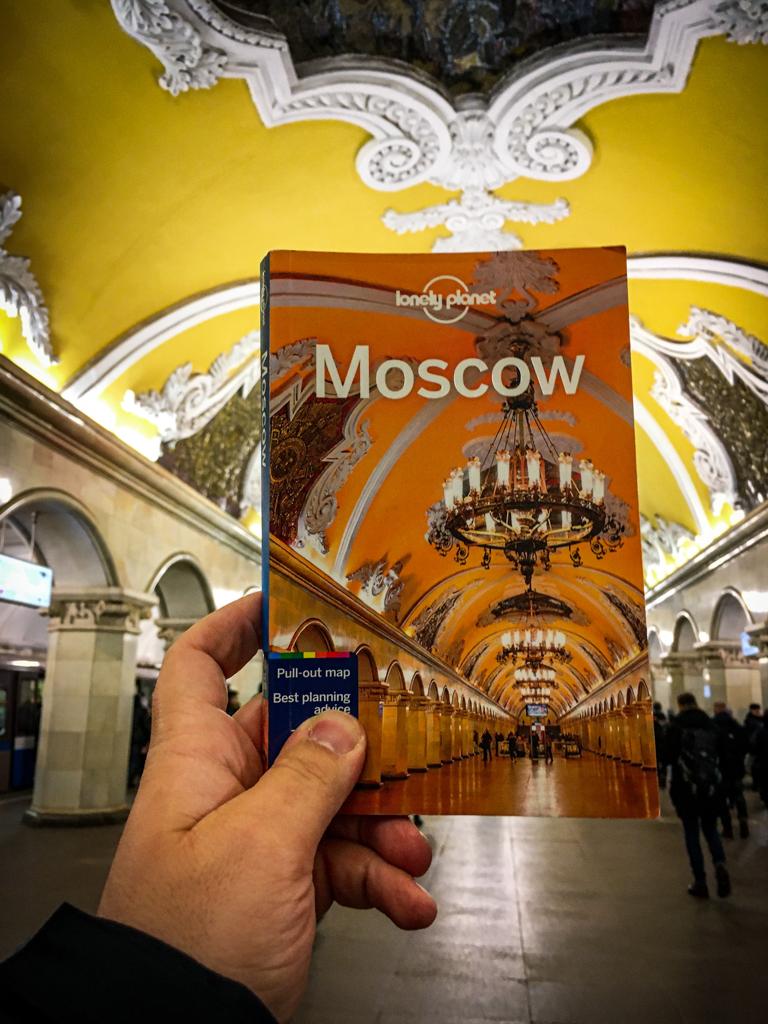
Trans-Mongolian line: Moscow to Beijing via Ulaanbaatar
This is the most popular route for western travellers on a Trans-Siberian Railway trip. This route is 7,621 km and takes 6 nights. With this train, you will have the chance to experience three different countries with their unique cultures. After travelling over Siberia, this train cuts across Mongolia and the Gobi desert before entering China.
TIP: Read our post on the Oslo to Bergen train an incredible beautiful train journey
The major train on this route is the weekly train number 3/4 (train 3 is westbound and train 4 is eastbound). This route is operated with Chinese trains, but when in Russia, a Russian restaurant car is attached, then later a Mongolian before a Chinese restaurant car for the last part of the trip is attached.
- Train 3 departs Beijing every Wednesday
- Train 4 departs Moscow every Tuesday
- Between Moscow and Ulan Ude you can combine this route with all other trains
- Most travellers on this train need a visa to Russia and China, and some also to Mongolia
Other routes
There are other alternative routes to take on your Trans-Siberian Railway trip as well, where you later can connect with the mainline to Vladivostok, or with the trains to China.
One route runs via Kazan, the capital and largest city of the Republic of Tatarstan in southwest Russia. Another option is the train via Yaroslavl, northeast of Moscow. Yaroslavl is part of the Golden Ring of ancient towns in Russia.
TIP: Read our post on the best places to visit in Russia’s Golden Ring
4. Choose your Trans-Siberian Railway stops
When you have chosen your preferred route for your Trans-Siberian Railway trip, it is time to choose your stops. It is possible to travel the whole journey in one go. But we do recommend stopping en route to your destination. Russia has so much to see, so it would be sad to miss out on a stop there.
Depending on the time you have, you can almost have unlimited stops. If you follow the mainline, there are several interesting places in Russia to visit. Perm, Yekaterinburg, Omsk, Novosibirsk, Irkutsk (Lake Baikal) and Ulan Ude are all recommended places to stop, among many others.
We chose two stops along the route, in Yekaterinburg and Irkutsk. If you have limited time, and can’t do too many stops, these two cities will give you many options to explore Russian culture, cities and nature.
Best things to do in Yekaterinburg
Yekaterinburg just west of the Ural mountains is the gateway between Europe and Asia. With a population of over 1,3 million, it is a major Russian city. The history goes long back but is maybe most famous for being the city where former president Boris Yeltsin came to rise, and also for being the city where Russia’s last monarchs, the Romanov family were executed.
The city centre is lively, with a mix of grand old and communist-era style buildings. The city has good cafes and restaurants. After some time on the train, a break here can be very welcome. If you visit Yekaterinburg in the winter, the city has a small ice sculpture festival in the city centre.
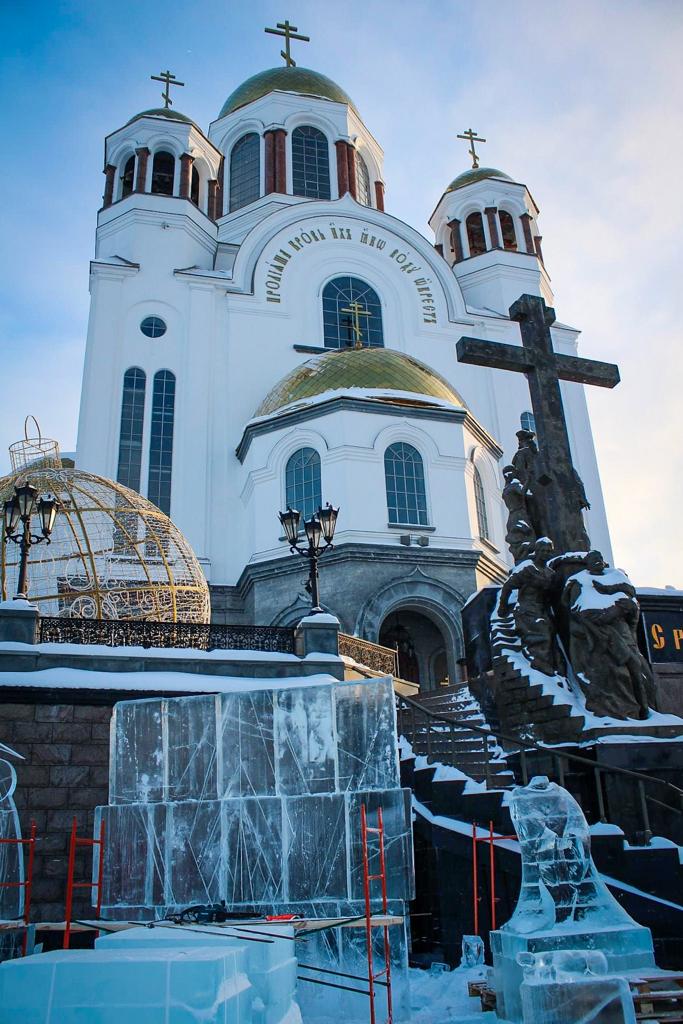
If you like opera or ballet (and think Bolshoi in Moscow is too expensive), Yekaterinburg has an excellent opera and ballet house showing first-class productions throughout the year. We were lucky and got good tickets for The Nutcracker for only €50.
If you’d like a detour out of the city, you can visit the Europe-Asia border, located 40km west of the city. Yekaterinburg For You can arrange the trip for you.
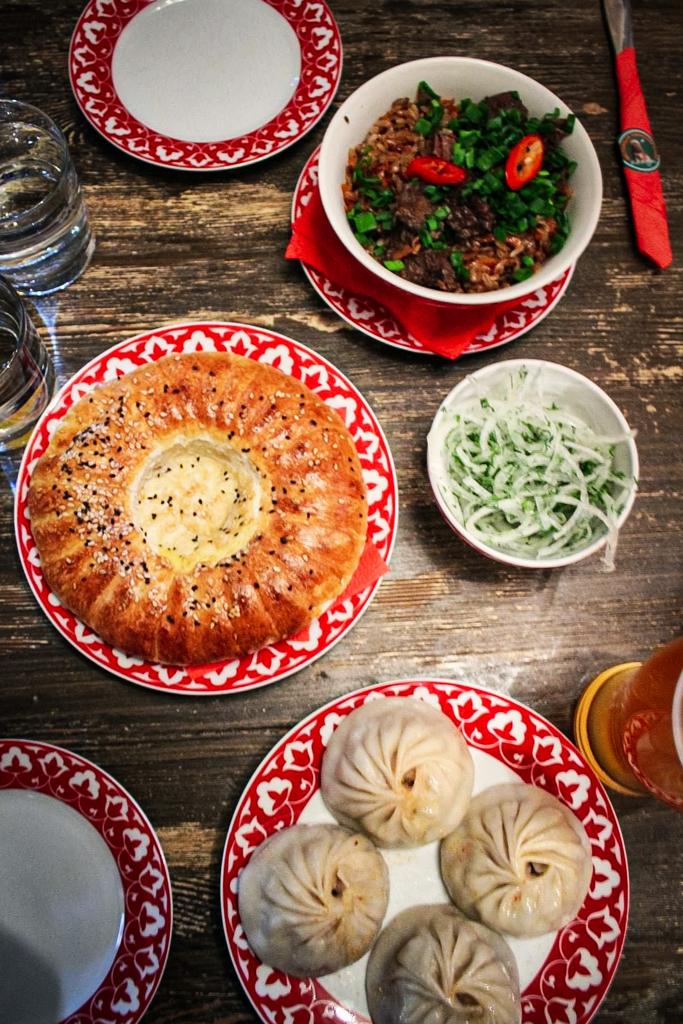
Our highlights in Yekaterinburg:
- Visit the Church upon the Blood. This is the death site of Tsar Nicholas II and his family
- See the mansion house of Sevastyanov
- Watch an opera or ballet at Ural Opera & Ballet . Book tickets in advance
- Eat excellent Uzbek food at the restaurant Nigora
- Visit the Ascension Church
- Enjoy the mix of architectural styles
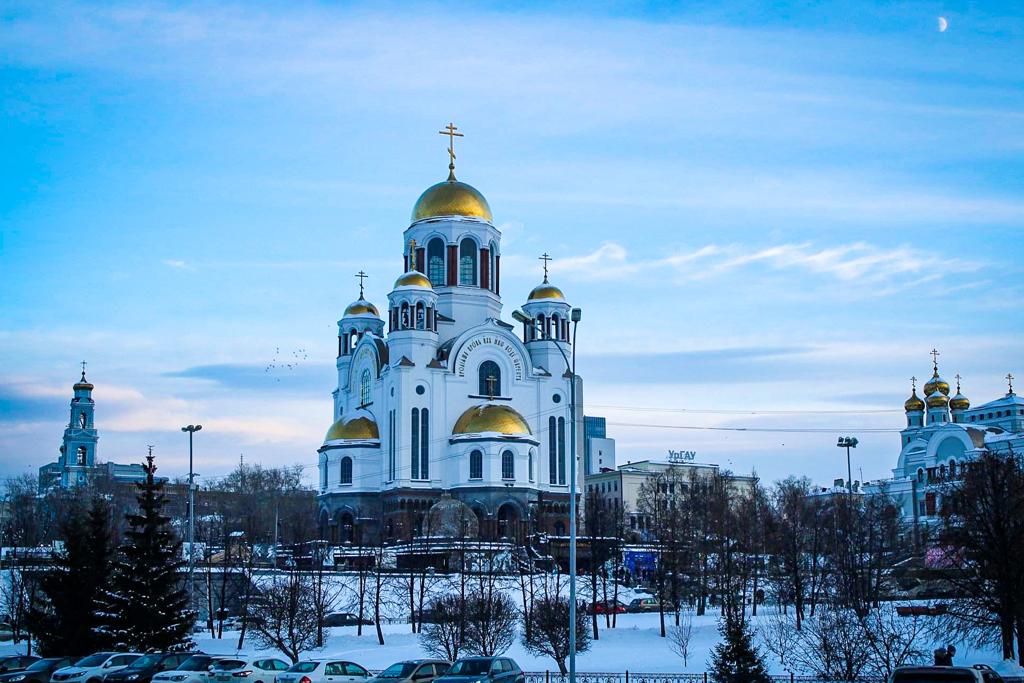
Best things to do in Irkutsk
This Siberian city is such a hidden treasure. Irkutsk is beautiful. One of the best things to do there is simply to wander around its streets and take in the beauty of the city.
From streets full of beautifully crafted wooden houses to spectacular churches and monasteries, Irkutsk really was a pleasant surprise. The food scene in the city is also great. Cute cafes serve delicious breakfasts, trendy cafes have excellent coffee and restaurants serve mouth-watering Asian food.
TIP: Read our post on Flamsbana Railway in Norway . It is said to be one of the most beautiful train journeys in the world
Irkutsk is the gateway to the famous Lake Baikal. You can visit the lake on a day trip from Irkutsk, or better spend a night or two. Most hotels and hostels in Irkutsk can help arrange trips to Baikal. The nearby, lakeside village of Listvyanka is a good starting point for exploring Lake Baikal. You can reach the village by hourly bus from outside the tourist office in Irkutsk.

Our highlights in Irkutsk:
- Wandering along the river and the streets to look at all the cute wooden houses and churches
- Visit the amazing Kazan Church of Irkutsk
- Visit Znamensky Monastery
- Eat excellent Asian food and Russian dumplings
- See the Epiphany Monastery
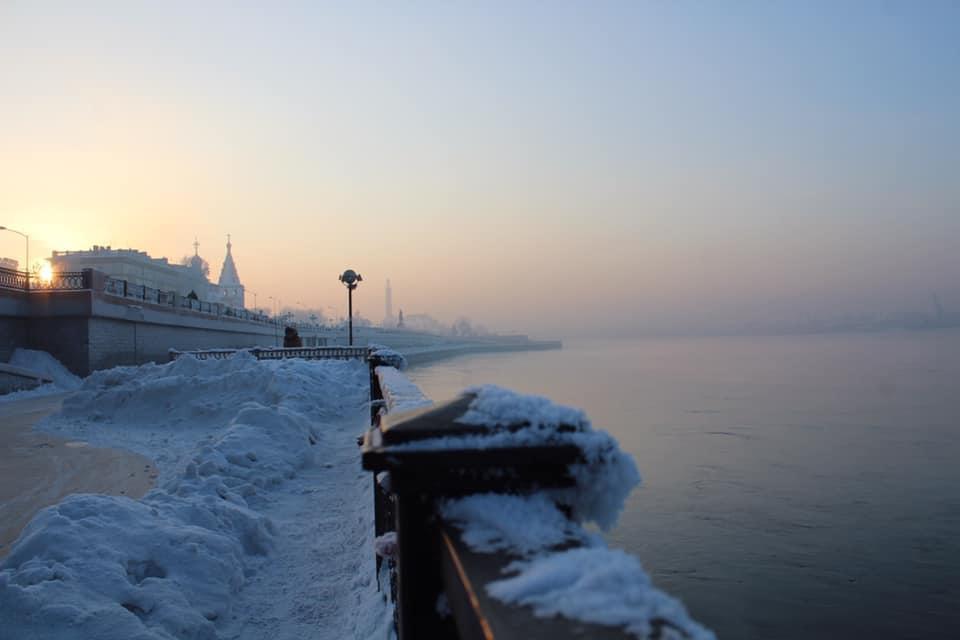
5. Classes on the Trans-Siberian Railway
Of the regular trains, train number 1/2, the Rossiya , has the best standard. It is very comfortable, but don’t expect luxury even when travelling on this train.
There are usually two or three classes to choose from when booking your ticket, but this may vary from train to train, season and demand. The berths (rooms) don’t vary that much. It is more about the space, and how many you will share the berth with.
Which class you should choose depends on your wishes and your budget. If you value privacy, choose the first class. If you travel on a budget, choose the third class. On the other hand, if you want to meet the locals as they travel, choose this class as well. Choose the second class for anything in between.
To get the best experience of a Trans-Siberian railway trip, we would recommend a mix of the classes (if you have stops along the route). It will give you unforgettable memories with locals, and ensure some privacy and calmness on the trip.
First class
1st class berths, known as Spainy Vagon or SV , on Russian trains are usually the same as 2nd class, but only the lower beds as used, meaning you only share the berth with one other person. On Chinese trains, known as deluxe sleeper , you normally sleep in the upper bed and can relax on a sofa during the day.
On trains without first class, it is possible to buy out the whole berth for single-use or to buy out the left-over beds in your berth if you are more people travelling.
The luggage is stored under the lower beds, and the berth is equipped with a reading light and electric socket. There are toilets and washrooms at each end of the wagon. Some trains have a shower available. Ask your train host if your train has showers for rent.
Second class
Usually, 2. class is known as Kupe, which are 4-bed berths with two upper and two lower beds. The lower beds function as a sitting area during the daytime. Expect to share your lower bed with passengers from the upper bed during the day, e.g. for meals. The second class on Chinese trains is called soft sleeper .
The luggage is stored under the lower beds, and the compartment is equipped with a reading light and electric socket. There are toilets and washrooms at each end of the wagon.
Third class
The third class, known as platskartny , has an open plan with 54 bunks per wagon, arranged in groups of 4 or 2. Here you will have a lack of privacy, but on the other hand, you are guaranteed nice encounters with your fellow passengers.
If you are travelling on a tight budget, the third class will be the best option. It is significantly cheaper than the higher classes.
Private luxury trains
If you have the money and are looking for a once-in-a-lifetime experience, one of the private luxury trains could be the option for you. Here you travel in a secluded world, with meals, excursions and the best comfort included. It is expensive, so only expect to meet other wealthy travellers on this train. The downside is that you won’t have many encounters with the locals if you choose one of these trains.
Check Golden Eagle or Imperial Russia for more information on private luxury trains.
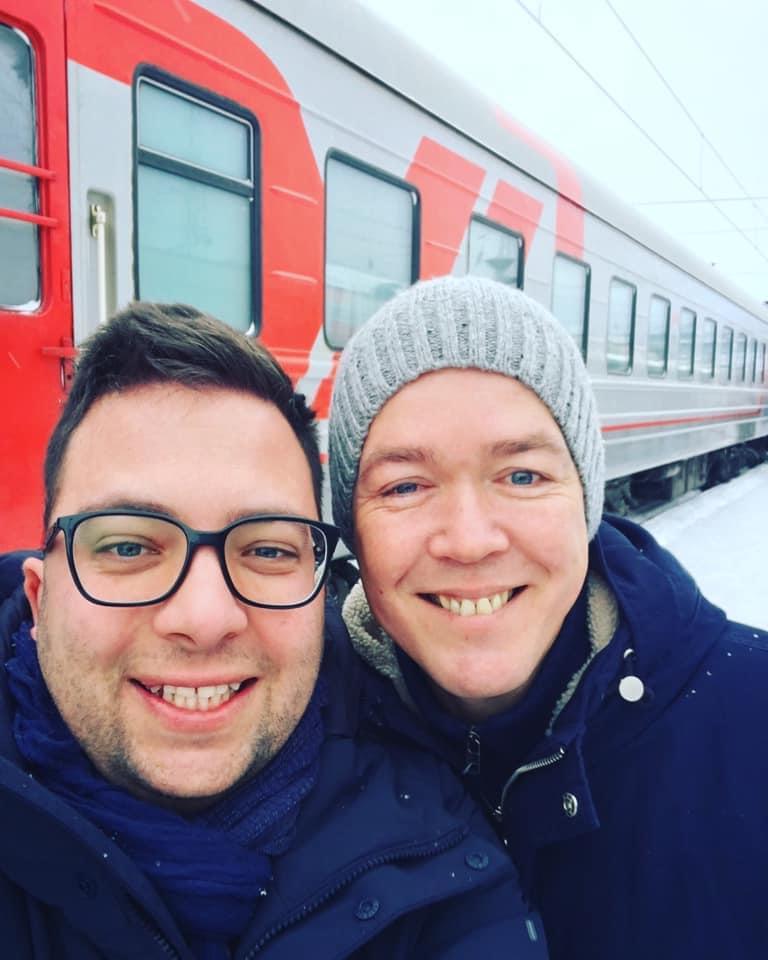
6. How much does the Trans-Siberian cost?
It’s a myth that a Trans-Siberian Railway trip is very expensive. On the contrary, when thinking of the distance travelled, it comes out as very affordable indeed.
In addition to the Trans-Siberian-Railway ticket itself, there are some additional costs you need to add:
- Costs for the visa(s)
- Health insurance
- Flights (or other transport) to start and endpoint
- Accommodation before and after the train ride, plus at the stops you make
- Food and drinks
- Personal expenses
The price of the train tickets depends on the time of year you travel, and your preferred class. The high season is June to August when the ticket prices are at the highest. Also around Russian New Year and Christmas, the prices rise. The same goes for the Chinese train around Chinese New Year.
In general, it is cheaper to travel the whole Trans-Siberian without stops, as you then travel on the same ticket the whole way. Making stops will raise the ticket cost, but not that much. The more stops you make, the higher the total cost you will get (when you stop you have to buy several independent tickets).
Your travel class will affect the ticket price the most, and in general, a first-class ticket is around double of a second-class 4-berth ticket. The lower bed is more expensive than the upper bed. Some tickets on certain trains also include one or a few meals, but far from all the meals, you’ll need.
Price example (per person) from our Trans-Siberian Railway trip (January 2020):
- Train number 70 Moscow-Yekaterinburg, 2nd class, 4-bed berth, lower bed: €68/ $83
- Train number 2, the Rossiya , Yekaterinburg-Irkutsk, 2nd class 4-bed berth, upper bed:€129 / $158
- Train number 100 Irkutsk-Vladivostok, 2nd class, 4-bed berth, upper bed: €121/ $149/ lower bed: €157 / $193
Total price Moscow-Vladivostok with two stops: €672/ $825, or only €336/ $412 per person. With more stops, the price will go up, and without stops, it will go down, but the difference is really not that much.
Tickets from Moscow to Beijing can cost as little as €550/ $680, but the real bargain is on the classic route from Moscow to Vladivostok.
As seen above, it is possible to make a Trans-Siberian Railway trip quite cheap. If you travel only third class, you can save more, and first-class would cost around double. The total price for the whole trip will then more depend on your choice of accommodation before, during and after the trip, and how much the flights or other transport costs before and after the train itself. With budget accommodation and low-cost airlines, it is possible to do this whole trip for less than €1000/ $1230, food and activities not included, if you live in Europe.
Expect to pay much more if you use a travel agent. Should you prefer to book via a travel agency, you will get the best deal from local offices in China or Mongolia, while the western ones usually will be the most pricey option.
For private luxury trains, you should expect to pay more than €10,000 (up to €20,000). And that’s per person!
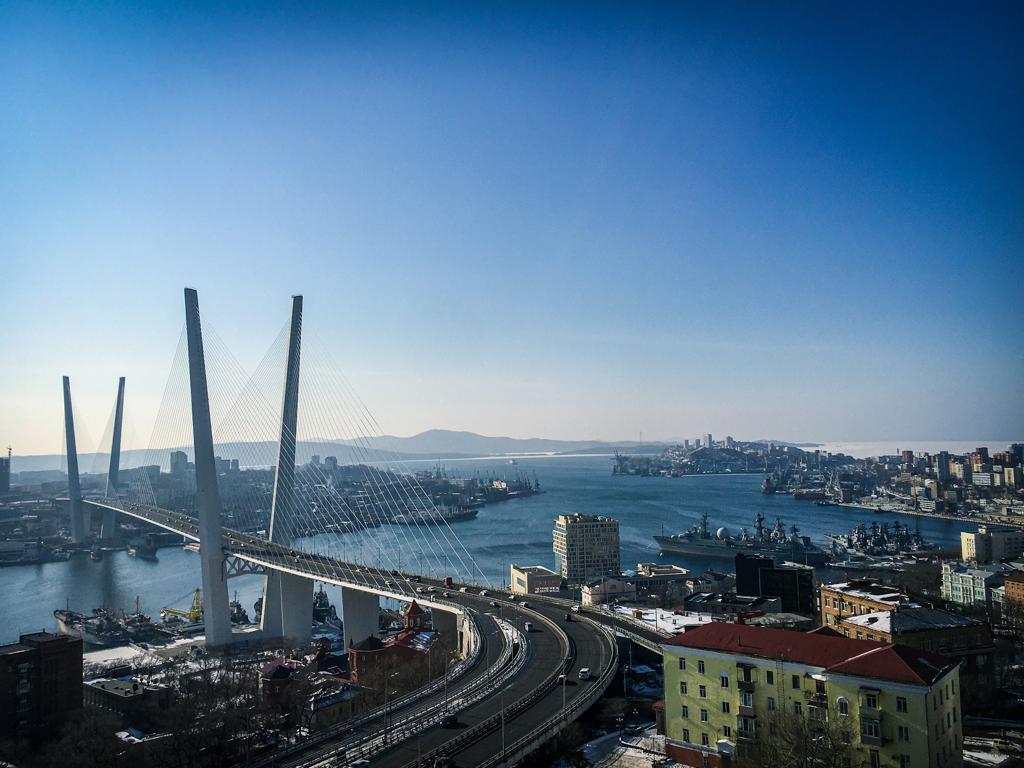
7. How to book Trans-Siberian Railway tickets?
When you have decided your route and planned which stops your Trans-Siberian railway trip should have, it is time to book your tickets.
Booking tickets to the Trans-Siberian Railway is surprisingly easy and straightforward. There is no need to ask a travel agent at home or in Russia to do this for you. Expect to pay much more if you use a travel agent.
Tickets are available for booking 60 days before departure. Especially in the high season, it is recommended to book in advance, but often it is possible to find tickets 2-3 days in advance online or at the train stations in Russia. The Trans-Mongolian line is popular and can sell out due to only one departure per week. Book way ahead unless you are very flexible on time.
During the booking process, you can choose between available berths and between upper or lower beds. You can also choose between mixed-gender or female berth only. Smoking is prohibited anywhere on the train, so you don’t have to fear smoking in your compartment.
TIP: There are toilets at each end of the wagons. If the toilet is full, it can stink really bad, also in the corridor and berths close by. Choose your berth in the middle of the wagon.
How to book tickets at the Trans-Siberian railway (for trains starting in Russia)
- Go to the official website of the Russian Railways (site in English)
- Click on log-in or registration to create a profile (mandatory before booking)
- Type in from/to and date and search
- Click on the from-price in the class you prefer, and see which berths are available
- Choose your berth, and if you want an upper or lower bed
- Fill in personal information, confirm, and pay (NB: you need to add your passport number)
- Voila! You have your ticket
- Tickets work electronic but, we recommend a print-out in case of battery issues
PLEASE NOTE: This way of booking is at the moment only available for trains starting in Russia. You can not book tickets online on this site for trains starting in China or Mongolia. Some US-issued credit cards may get rejected.
How to buy tickets on trains starting in China and Mongolia:
- You can not buy tickets for the Trans-Siberian Railway at Beijing stations
- The CITS international train booking office is recommended for purchasing tickets in China and Mongolia
- In Ulaanbaatar, you can buy tickets at the international ticket office next to the train station
8. Life onboard the Trans-Siberian Railway
A journey on the Trans-Siberian Railway is slow travel at its best. Prepare yourself for days on the tracks with many fellow passengers coming and going. The encounters with fellow passengers, tourists and locals, will be some of the most memorable moments of this trip. Keep in mind that the Trans-Siberian is not run for tourists. It is as it’s meant to be; a passenger train made for transporting many people over long distances. Don’t expect nightclubs and entertainment onboard.
Even though you will spend hours and days onboard the train, you hardly will have time to get bored. Somehow, the days pass by as the Siberian landscape slowly glides by outside your window. Relax, watch the scenery outside, read, play a game, listen to music or podcasts or watch a downloaded movie or series. Talk with your fellow passengers, stretch your legs at the stops, have a drink and enjoy your journey. That’s all that it’s about!
Please note that onboard the train, they always use Moscow time. Time tables show both Moscow and local time. Keep track of the time zone, and you will manage.
Before boarding the train
Essential items to pack
- Comfy clothes
- Slip-on footwear
- Electric adapter
- Toilet paper
- Bottled water
- Instant food
Arrival and boarding
- Trains in Russia are punctual
- Check the name of the station closely
- Arrive latest 30 min before departure
- Platform and track will be displayed in the departure hall
- Keep tickets and passports safe but available for inspection

Arrival on the train
Upon arrival, you will meet your train host, the provodnitsa. She is the boss, your best friend, and must be obeyed. Each wagon has its provodnitsa, and on long trains, they work in pairs (one works while the other rests). They only speak Russian and can seem very strict and fearsome, but mostly they are friendly and helpful.
On arrival, she will check your ticket and provide you with the bed linen. Her most important task is to keep her wagon clean, tidy and warm. She also makes sure that the samovar (water boiler) at the end of the corridor always contains hot water for your use.
At the beginning of the journey, they usually also offer some souvenirs or snacks they have for sale. Buy something, and you have a friend and helper for the rest of the journey. If you need something, like plates, cups or cutlery, you can often borrow it from her (for a small tip).
Your compartment
Depending on if you travel solo, as a couple or in a small group, usually, you share your compartment with other passengers, unless you have bought all beds. Be polite, greet fellow travellers and try to interact with them.
You can be lucky or not so lucky with your roommates, but that’s also a part of the experience. Put baggage under the seats, and keep personal belongings in your bed. Respect that people want to sleep in the night, and expect fellow passengers to come and go at all times as the train stops frequently.
If you have the lower bed, you are expected to make room for passengers in the upper bed to sit in your bed and share the table at meals. Not everyone is so happy with doing this, but all passengers have the right to use the table.
TIP: If you are two travelling together, book one lower and one upper bed on the same side. Then you can rest whenever you want, and sharing the lower bed as a daytime sofa and the table is never a problem.

Meals on board
Let’s be honest: don’t expect your Trans-Siberian Railway trip to be a culinary journey. In that case, you will get deeply disappointed. If your ticket includes some meals, you will get them brought to your compartment. Every train has a restaurant car, with various decorations. The food in the restaurant car is disappointing and nothing special. It is quite pricey for such low quality.
Try the food in the restaurant car as part of your experience. But don’t have all your meals here. Eat most meals in your compartment, and rather use the restaurant car for a drink or two during the day. It is a good place to meet other travellers.
Buy instant food, like noodles, soups and stews before you board the train. The samovar in your wagon always has hot water you can use. Stock up on fruits, crackers and other dry food items. When the train stops for more than just a few minutes you can buy more food at the stations along the route.

Short stops along the route
The many shortstops along the route are one of the highlights during the day onboard. Sometimes the train stops for just a few minutes and other times for anything between 30 minutes to an hour. Each wagon is equipped with a timetable showing the stops along the route. The timetable states arrival and departure times at each stop.
When the train only stops for a few minutes, it can be worth getting off to get some fresh air and stretch your legs. Don’t be late back. The train will not wait for you.
Life on the stations is some of the most fun and memorable moments of this journey. Passengers come and go, and everywhere it’s busy activities. Small stalls sell fresh or preserved food, drinks, fruits and sweets. Locals often also offer local products for sale. It can be handcrafted items, souvenirs, food and drinks. Often you can find fresh bread on the stations, and in some places, you can also find warm food. Try the smoked fish offered at the stations in Siberia. It’s delicious and a good supplement to all the instant food.

Click on the pin to save it to Pinterest

2 thoughts on “Total Guide to plan & book a great Trans-Siberian Railway Trip”
Hello guys!! Just loved your blog on the transiberian. It cleared my mind and encourage us to a future trip. Have fun and enjoy life as you two always do and maybe our paths will cross some day on a post covid dream trip. Big hugs from Monterrey, Mexico.
Thank you very much for your feedback! Trans-Siberian is such a great adventure that we would recommend to everyone.
Comments are closed.

We are Matthias and Kent. With a strong desire to travel the world, we create articles and travel guides from our many trips. We aim to inspire you to explore the world, near and far. Maybe your next adventure is closer than you think?

IMAGES
VIDEO
COMMENTS
Your Journey Nursery and Preschool, Glenwood, Maryland. 528 likes · 9 talking about this · 20 were here. A holistic approach to nurturing children.
Your Journey Nursery and Preschool is a Licensed Child Care Center in Glenwood MD. It has maximum capacity of 33 children. The provider accepts children ages of: 6 weeks through 17 months, 18 months through 23 months, 2 years, 3 years, 4 years, 5 years, 5 years to 15 years. The license number is: 256788.
Giggle and Grow - infants 6 weeks to 12 months old. Location: Glenwood, MD. YJNP is in the process of expansion at St. Andrew's Episcopal Church on Rt 97 in Glenwood. Ratios: 1 teacher : 3 students. Our primary focus with our infants is helping them to create stable attachments with their caregivers, help them reach developmental milestones ...
Your Journey helps families welcome their newborns in an environment that fosters healing, growth, rest, and well-being. As they grow, our Nursery and Preschool teaches your children to start their journey with a love for themselves, others, and learning as a whole. We offer a wide range of programs and services to meet your family's needs.
Your Journey Family Services. Child Care, Preschool, Summer Camp, and Before and After school care in Glenwood, MD. We start your infant in a nurturing environment helping to support the achievement of developmental milestones and ultimately prepare your children for Kindergarten. Doulas in Maryland, Washington D.C., or Northern Virginia.
Your Journey Nursery and Preschool . Nearby schools & colleges. Glenelg United Methodist Church Burntwoods Road, Glenelg . Glenelg Boosters Burntwoods Road, ... You can sign your kids up for weekly dance classes . Our session begins the week of 6/20. To the graduating preschoolers .
Your Journey Nursery and Preschool: An innovative, compassionate, and holistic approach to child care We have a passion for children and the education and professionalism to provide your family with a great experience. Located on a 4 acre property with a beautiful playground and plenty of space to run, we have ample opportunity to incorporate nature in our everyday activities from the art we ...
At that time, I started my business, Your Journey Doula Services where I learned such an incredible amount about newborns and all things baby-related. I gradually got more certifications and exposure to a diverse range of experiences. ... Your Journey Nursery & Preschool, in March of 2018 when I was 7 months pregnant with my first child. Since ...
Official response from Your Journey Nursery & Preschool. If you worked in a 2 year old class, there would be 6 children. The ratio for 2 year olds is 6:1. There are no aides provided or required for 6 two year olds. The teachers have planning period while the children nap from 12:30-3:00 daily which is a significant amount of time.
Your Journey Nursery And Preschool in Glenwood, Maryland. Find child care near you by city, price, and age.
Incorporating these activities into your child's daily routine will help strengthen their fine motor skills, ultimately supporting their success in preschool. 5. Promote Early Literacy Skills ...
JOURNEY CHURCH OF THE RIVER REGION. 435 SHEILA BLVD, PRATTVILLE, AL 36066. 334.351.9994. [email protected]. find our Latest Message. Our goal is to provide quality childcare in an educational, loving, caring, and Christian environment. We value the trust in our staff and our program as we serve your needs.
ABOUT OUR PRESCHOOL Journey Preschool is a ministry of Journey Church and operates as a private, state licensed facility. The school was founded to offer the community a Christ-centered preschool. Journey Preschool emphasizes a traditional Christian approach to education using phonics and basic math skills. All classes use the A Beka curriculum supplemented with additional resources.
What The Preschool Journey Offers…. Preschool Curriculum: 26-weeks of lesson plans for children ages 2.5-5. Simple, hands-on play activities to teach skills children need for kindergarten. Tips, Tricks & Tools: Detailed explanation of what should be taught during the preschool years, along with ideas for organizing and creating a schedule.
The Your Journey Together kit includes all of the resources that a coach needs to implement the curriculum: YJT Coach Guide, with 29 step-by-step lessons and parent handouts (266 pages) Building Your Bounce: Simple Strategies for a Resilient You. Promoting Resilience For Now and Forever, Family Guide (Infant/Toddler)
Part 1: Preparing Your Preschooler. The journey from preschool to kindergarten marks a significant milestone in both your child's life and your own as a parent. As your little one takes their first steps into the world of formal education, a mix of excitement and apprehension can flood your thoughts and emotions.
3800 Ten Oaks Rd, Glenelg, MD 21737. Hours: Drop off as early as 7:00 AM no later than 8 AM. van leaves at 8:15 for school drop offs. School Pick up starts at 3:10 PM. Parents must pick up their children from YJNP by 6 PM. Tuition: $150/ Week for Before and After $100/week for before or after only.
Mr. Jeff has been involved in Howard County Gymnastics since 1973. He joined Gymnastics Plus in 1993 as an Instructor/Coach but branched out on his own in 2004. Our current gym was formerly the home of his business, Pomeroy Gymnastics. Mr. Jeff has been teaching gymnastics to children and adults for over 30 years.
04. Private kindergarten "Discovery English Preschool" in Krylatskoye is a new approach to preschool education of children in English. Native speakers from the USA are engaged in with children all day, because only by immersing themselves in the English environment, children are able to start thinking in the language as a second native!
5. Gorky Park. Moscow's premier green space, Gorky Park (Park Gor'kogo) is the city's biggest and most famous park. There is entertainment on offer here for every taste, from outdoor dancing sessions to yoga classes, volleyball, ping-pong, rollerblading, and bike and boat rental in summer.
Infant "Nest" Infants & Toddlers (6 weeks- 24 months ) - Giggle & Grow Class . $470/ Week Full-Time . $330/ Week 3- Day . $ 220/ Week 2-Day
We will also shortly present the stops we had en route and give you some suggestions on what to see there, as an idea, while you start planning your journey. 1. Planning your Trans-Siberian Railway trip. 2. Best time to travel the Trans-Siberian Railway. Trans-Siberian in summer. Trans-Siberian in autumn.
Then, go to the train station to continue your journey to Irkutsk. Day 7: On the Train Railway through Russia. This part of Trans-Siberian route is considered the most beautiful. The trip will take you almost the whole day. The train will cross over many rivers including the Kam, Chuna, Lya, Oka, Yenisey, and Angara.
Your Journey Doula Services offers a comprehensive curriculum for child birth education as well as newborn soothing techniques. They are all offered in the form of private in home consults, group classes, and individual classes.